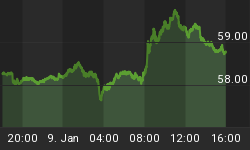Despite the long history of interest rates soaring so long as a boom is on and then plunging with the consequent contraction, the street used the hope of only one more hike (in Fed funds) to aggressively bid the stock market up.
The reality of the credit cycle suggests that the debate about the next Fed change is basically academic. However, one prevailing concern is dead wrong - this is that the deliberate rise in policy rates is worrisome.
This is wrong because, throughout financial history, which predates central banking and the artifice of administered rates, market interest rates soar during a boom and decline during the consequent contraction.
The last time Wall Street pundits professionally worried about rising administered rates was in the summer of 2000. Our advice, of course based upon history, was that as long as rates were going up the party was on.
The time to worry was when short-dated market rates of interest turn down. Also, typically at the peak of great speculations, the change in administered rates by the central bank has lagged the turn in market rates.
Earlier in the year, Ned Davis Research (NDR) published a study on stock market declines following the last hike in administered rates. The action is typically a downer.
NDR also reviewed the same data and pointed out that when the 6% Fed fund rate was reached, a bear market would likely follow. It should be pointed out that in the 1920s the focus was on the discount rate, which reached the high of 6% in August, 1929. Although not much was said about it, the discount rate was increased to 6% two weeks ago!
Also earlier in the year, we reviewed the pattern of administered rates during great speculations and their demise.
This pattern does not require the administered rate to hit a specific number, but the significant point is the last rate hike.
This time around, euphoria about the last hike seems to have crested in late April when, for example, Todd Buchholz on CNBC spread the gospel with: "Every money manager has a little file. It says what to do when the Fed says we're done. And there are only four words in that file. And they say "Buy stocks, buy bonds."
This seems to be more based upon faith in the theoretical wonders of central banking than upon their actual record. The WSJ joined in with "Stocks enjoyed their strongest rally this year, aided by explicit signs that the Federal Reserve is about to stop raising rates."
There are some problems with this. One is the notion that the Fed has been instrumental in raising rates. Our case has been that short rates always increase in a boom and that the increase in administered rates has been "window dressing". There has been no indication of tightening on the Fed's part.
For decades, our view has been that the Fed would never willingly do anything to impair the party, but that natural credit forces would force corrections of the excesses.
To illustrate a point, we'll go along with the convention that the Fed is all important and that this is the end of "rate hikes".
In which case, it is appropriate to review was has happened to great booms after the last hike in the administered rate by the senior central bank. This tables out as follows:
| LAST HIKE IN ADMINISTERED RATES ( or your worst nightmare ) | ||||
| LAST HIKE | RATE | STOCK MARKET | LOW RATE | STOCK MARKET LOW |
| July, 2000 | 6.5% | 5133 | 1.0% | 1109 |
| August, 1929 | 6% | 381 | 1.5% | 42 |
| November, 1873 | 9% | 441 | 2% | 157 |
The term, administered rate, means Fed funds now, the discount rate in the 1929 example, and the rediscount rate in 1873. The senior central bank prior to the Fed was the Bank of England. It is worth stressing that changes in short-dated market rates of interest have led changes in administered rates.
Stock indexes used are the Nasdaq in 2000, the Dow in 1929, and an index of mining and smelting stocks for the post-1873 contraction.
These are the most spectacular bull markets in the past 180 years. During the 1825, 1772, and 1720 examples, the senior central bank made only small changes in the administered rate.
So the criteria are a huge speculative stock market with considerable changes in administered interest rates. The period covered is from the deadly last increase in rates down to the initial low or, as it's tempting to say, the last cut in rates that prompted the relief of a stock market recovery.
The pattern is clear and dramatic as the plunges in administered rates tabled are the greatest in history and they have only occurred following an extraordinary boom and concluding speculative frenzy. For emphasis, this is going to be rephrased as great bull markets have been accompanied by rising administered rates and the consequent bear markets have been accompanied by the fastest declines in rates in history.
Recent highs in the stock markets were prompted by comments about the "last hike". This was celebrated; it should have been dreaded.















